From today TU Delft is leading a new project sponsored by the European Commission in which research institutes, universities and the battery and automotive industry from 8 European countries will join forces to develop cheaper and safer rechargeable batteries with higher energy density and power performance.
Feb 7th, 2011
Read more
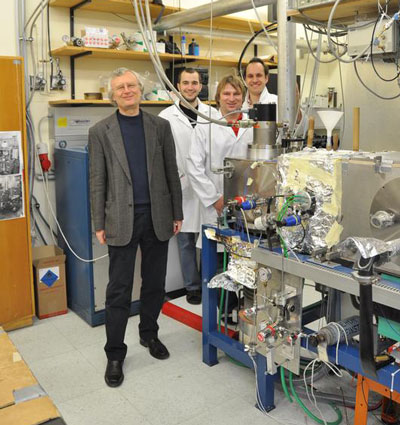 An der TU Graz beschaeftigen sich Experimentalphysiker mit der Frage, welche quantenmechanischen - thermischen, elektrischen, magnetischen sowie optischen - Eigenschaften Molekuel-Cluster im Nanobereich besitzen.
An der TU Graz beschaeftigen sich Experimentalphysiker mit der Frage, welche quantenmechanischen - thermischen, elektrischen, magnetischen sowie optischen - Eigenschaften Molekuel-Cluster im Nanobereich besitzen.
Feb 7th, 2011
Read more
Discovery of inorganic, semipermeable clay vesicles indicates minerals could have played a key role in the origins of life.
Feb 7th, 2011
Read more
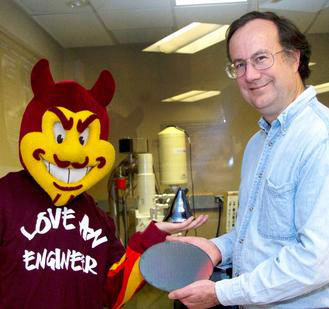 The Arizona Science Center is enlisting the expertise of professors in Arizona State University's Ira A. Fulton Schools of Engineering in showcasing the latest advances in materials science and engineering.
The Arizona Science Center is enlisting the expertise of professors in Arizona State University's Ira A. Fulton Schools of Engineering in showcasing the latest advances in materials science and engineering.
Feb 7th, 2011
Read more
In recognition of the significant achievements being made by Irish scientists and scientists based in Ireland to the field of nanoscience the RDS in partnership with Intel Ireland have inaugurated a Prize Lecture for Nanoscience.
Feb 7th, 2011
Read more
Scientists at INM - Leibniz Institute for New Materials developed a barrier layer that separates the metal carrier from the absorber film and thus increases the efficiency of metal-based CIGS solar cells.
Feb 7th, 2011
Read more
Engineers at the University of California, Berkeley, have found a way to grow nanolasers directly onto a silicon surface, an achievement that could lead to a new class of faster, more efficient microprocessors, as well as to powerful biochemical sensors that use optoelectronic chips.
Feb 6th, 2011
Read more
In a complex feat of nanoengineering, a team of scientists at Kyoto University and the University of Oxford have succeeded in creating a programable molecular transport system, the workings of which can be observed in real time.
Feb 6th, 2011
Read more
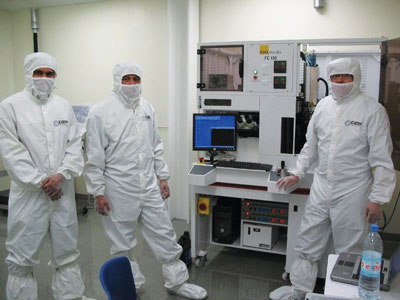 Sandia will help Mexican engineering students learn to design tiny microelectromechanical devices (MEMS), according to a memorandum of understanding recently signed by Sandia and the University of Guadalajara.
Sandia will help Mexican engineering students learn to design tiny microelectromechanical devices (MEMS), according to a memorandum of understanding recently signed by Sandia and the University of Guadalajara.
Feb 5th, 2011
Read more
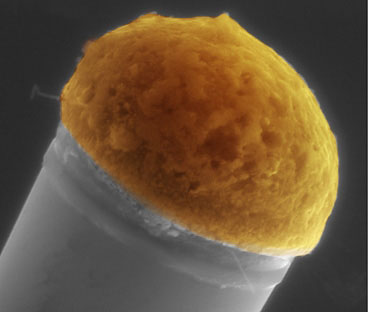 Microwires made of silicon have a wide range of possible uses, including the production of solar cells that can harvest much more sunlight for a given amount of material than a conventional solar cell made from a thin wafer of silicon crystal. Now researchers from MIT and Penn State have found a way of producing such wires in quantity in a highly controlled way that could be scaled up to an industrial-scale process, potentially leading to practical commercial applications.
Microwires made of silicon have a wide range of possible uses, including the production of solar cells that can harvest much more sunlight for a given amount of material than a conventional solar cell made from a thin wafer of silicon crystal. Now researchers from MIT and Penn State have found a way of producing such wires in quantity in a highly controlled way that could be scaled up to an industrial-scale process, potentially leading to practical commercial applications.
Feb 5th, 2011
Read more
Researchers at Case Western Reserve University have developed a little bomb that promises a big bang for cancer patients.
Feb 4th, 2011
Read more
Ben-Gurion University of the Negev researcher Dr. Taleb Mokari, a member of the Ilse Katz Institute for Nanoscale Science and Technology, has been awarded a prestigious Krill Prize for Excellence in Scientific Research. Dr. Mokari received the Prize for his work on developing novel nanostructures for renewable energy applications.
Feb 4th, 2011
Read more
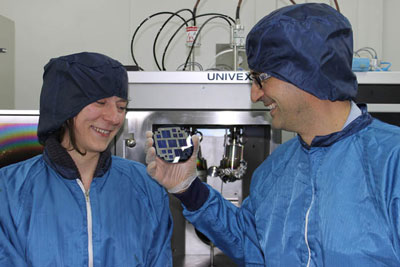 The Micro- and Nanotechnology Research Group of the Universitat Politecnica de Catalunya has produced silicon photovoltaic cells with a conversion efficiency of 20.5%, the highest level achieved in Spain using this material.
The Micro- and Nanotechnology Research Group of the Universitat Politecnica de Catalunya has produced silicon photovoltaic cells with a conversion efficiency of 20.5%, the highest level achieved in Spain using this material.
Feb 4th, 2011
Read more
The Food Standards Agency (FSA) in the UK has published the minutes of the Nanotechnologies and Food Discussion Group meeting held on 13 January 2011.
Feb 4th, 2011
Read more
The human olfactory system possesses a special electric amplification mechanism that enables olfactory cells to respond even to extremely weak stimuli. Scientists at Heidelberg University have now established how this mechanism works.
Feb 4th, 2011
Read more
Das Landesanstalt fuer Umwelt, Messungen und Naturschutz Baden-Wuerttemberg hat eine neue Broschuere herausgegeben mit dem Titel "Nanomaterialien: Anwendungen im Umweltbereich". Diese Broschuere stellt Beispiele fuer den Einsatz von Nanomaterialien vor, die zu deutlichen Umweltentlastungen fuehren koennen.
Feb 4th, 2011
Read more






 Subscribe to our Nanotechnology News feed
Subscribe to our Nanotechnology News feed